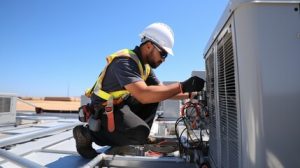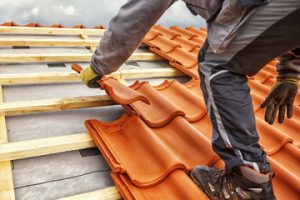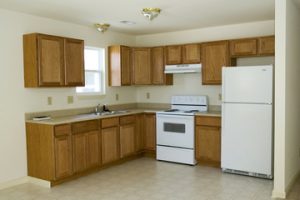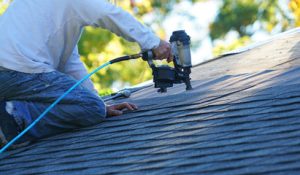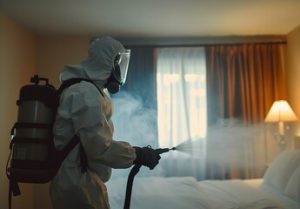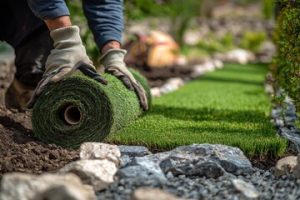Personal injury cases can be overwhelming, stressful, and emotionally taxing. Whether the injury results from a car accident, slip and fall, workplace incident, or medical malpractice, the physical, emotional, and financial toll can be significant. In these situations, securing the right legal representation is essential to protect your rights, navigate the complex legal system, and pursue the compensation you deserve.
Top-rated Personal Injury Lawyer provides the expertise, guidance, and support necessary to achieve favorable outcomes while allowing clients to focus on recovery. With professional representation, individuals gain access to a team of experienced advocates who understand the nuances of personal injury law, ensuring that every case receives the attention and diligence it requires.

One of the primary benefits of hiring a top-rated personal injury lawyer is their ability to provide comprehensive legal support throughout the entire claims process. Personal injury law is multifaceted, involving complex statutes, insurance regulations, and case precedents. Without specialized knowledge, it can be challenging for an individual to fully understand their rights, potential compensation, or the steps necessary to build a strong case. Experienced lawyers assess each case carefully, gathering evidence, reviewing medical records, consulting with experts, and evaluating the circumstances surrounding the injury. This meticulous approach ensures that clients have a clear understanding of their legal options and are prepared for every stage of the process, from initial filing to settlement negotiations or trial.
Accurate case evaluation is a critical aspect of personal injury representation. Top-rated lawyers can determine the full extent of damages, including medical expenses, lost wages, emotional distress, pain and suffering, and long-term rehabilitation costs. Insurance companies often attempt to minimize claims, offering settlements that fail to account for the true impact of the injury. Legal professionals work to counter these tactics by presenting detailed documentation and expert testimony that supports the client’s claim. By calculating damages accurately and advocating assertively, personal injury lawyers help ensure that clients receive compensation that reflects both the immediate and long-term effects of their injuries.
Negotiating with insurance companies is another area where professional lawyers provide significant value. Insurance adjusters are trained to protect the interests of their companies and may use tactics to reduce settlement amounts or discourage claims altogether. Top-rated personal injury lawyers have extensive experience dealing with these negotiations, understanding the strategies used by insurance representatives, and knowing how to respond effectively. They act as advocates for their clients, ensuring that offers are fair, legally sound, and aligned with the actual damages suffered. This expertise often results in higher settlements than what individuals might secure on their own, providing the financial support necessary to cover medical care, lost income, and ongoing rehabilitation.
In addition to settlement negotiations, personal injury lawyers are prepared to take cases to court if necessary. While many cases are resolved through settlements, some require litigation to achieve a fair outcome. Experienced lawyers understand courtroom procedures, trial strategies, and the rules of evidence, allowing them to present compelling arguments on behalf of their clients. They guide clients through every aspect of the trial process, from pre-trial motions and discovery to opening statements, witness examination, and closing arguments. Having a knowledgeable attorney in court ensures that your case is presented professionally and persuasively, maximizing the likelihood of a favorable judgment.
Communication and support are also central to the services provided by top-rated personal injury lawyers. Injuries can create significant stress and uncertainty, making it difficult for individuals to focus on the legal process. Skilled attorneys prioritize clear, transparent communication, explaining each step, answering questions, and keeping clients informed of developments in real-time. This level of attention not only builds trust but also allows clients to make informed decisions about their case. Emotional support is often an unspoken but vital component of legal representation, as having an experienced advocate by your side can alleviate anxiety and provide reassurance during challenging times.
Medical expertise is another key advantage of hiring a personal injury lawyer. Many injuries involve complex medical conditions, long-term treatment plans, and the need for expert testimony to establish causation and damages. Lawyers work closely with medical professionals to review diagnoses, treatment records, and prognosis reports, ensuring that all medical evidence is accurately presented in support of the claim. This collaboration helps build a strong case, demonstrating the severity of the injury and its impact on the client’s life. Additionally, lawyers can recommend specialists for independent evaluations to further substantiate claims, providing courts or insurance companies with credible evidence that supports maximum compensation.
Understanding the statute of limitations is also a crucial factor in personal injury cases. Each type of claim has a limited time frame during which legal action can be taken. Missing this deadline can result in losing the right to pursue compensation altogether. Top-rated personal injury lawyers ensure that all filings, documentation, and legal steps are completed promptly and in accordance with applicable laws. Their familiarity with deadlines, procedural requirements, and filing processes protects clients from administrative errors that could jeopardize their claim, providing peace of mind and ensuring the case proceeds efficiently.
Personal injury cases often involve negotiations with multiple parties, including insurance companies, medical providers, and sometimes third-party defendants. Navigating these interactions requires professionalism, experience, and strategic thinking. Lawyers coordinate with all relevant parties to manage documentation, communicate offers, and resolve disputes, reducing confusion and preventing delays. Their ability to handle these complex interactions ensures that clients are not overwhelmed by administrative tasks or conflicting demands, allowing them to concentrate on recovery while their attorney manages the legal process.
Another critical consideration in hiring a personal injury lawyer is their knowledge of settlement versus litigation strategy. While settlements can provide faster resolutions and avoid the stress of trial, they must be fair and reflective of actual damages. Experienced lawyers evaluate settlement offers carefully, weighing them against potential court outcomes to determine the best course of action. If a fair settlement cannot be reached, they are prepared to pursue litigation with confidence, knowing how to build a persuasive case for maximum compensation. This strategic guidance ensures that clients are empowered to make informed decisions that prioritize both financial recovery and personal well-being.
Top-rated personal injury lawyers also bring negotiation leverage through their reputation and track record. Insurance companies and opposing legal teams recognize that seasoned attorneys are capable of thorough investigations, meticulous case preparation, and strong courtroom representation. This credibility often encourages fairer negotiations and can result in more favorable settlements, as opposing parties are less likely to undervalue claims when faced with an attorney who demonstrates expertise and commitment. Working with a reputable lawyer increases the likelihood that compensation will adequately cover medical bills, lost income, rehabilitation costs, and other expenses related to the injury.
Cost and accessibility are additional factors that make hiring a professional personal injury lawyer an advantageous choice. Many lawyers operate on a contingency fee basis, meaning clients pay only if the case is successfully resolved through settlement or judgment. This approach reduces the financial burden of legal representation and ensures that clients have access to expert advocacy regardless of their immediate financial situation. By removing upfront fees, clients can focus on their recovery while knowing that their attorney is motivated to secure the best possible outcome.
Education and experience in personal injury law are essential for handling complex cases involving liability, negligence, and multi-party disputes. Lawyers assess liability by examining accident reports, witness statements, surveillance footage, and other evidence to establish responsibility. They navigate insurance policies, negotiate with adjusters, and address legal defenses raised by opposing parties. Their understanding of legal precedents and applicable statutes allows them to anticipate challenges, counter arguments effectively, and advocate for maximum compensation. Without this expertise, individuals risk accepting inadequate settlements or facing unnecessary legal obstacles that could limit recovery.
In conclusion, hiring a top-rated personal injury lawyer is a critical step for anyone facing injuries due to accidents, negligence, or other unforeseen incidents. From comprehensive case evaluation and strategic negotiation to court representation and medical coordination, professional lawyers provide the guidance and advocacy necessary to achieve maximum compensation. Their expertise protects clients’ rights, reduces stress, and ensures that every aspect of the claim is handled efficiently and effectively. Whether dealing with a minor injury or a complex, life-altering incident, having a skilled personal injury attorney by your side is invaluable. By leveraging legal knowledge, negotiation experience, and courtroom strategy, top-rated personal injury lawyers empower clients to focus on recovery while pursuing the financial support needed to restore stability, security, and peace of mind.
